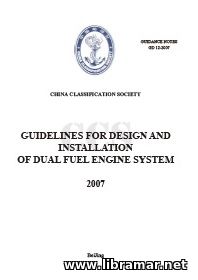 The official CCS document providing required guidance for the design and subsequent installation of the dual-fuel engine systems. The requirements and information in this paper will apply to the engines using LNG and oil fuel as a fuel. The content of the guidelines is arranged in five chapters, first of which being introductory and providing the definitions, plans and documents, and also application.
The shipboard trial is also addressed within this opening chapter. The second and third chapters deal with the engine room/compartment and gas fuel piping system, respectively, covering general and specific requirements. The fourth chapter is devoted to the dual fuel engines and addresses the arrangement, protection of the crankcase, starting air, air intakes and piston underside area, ventilation and exhaust system.
The closing fifth chapter of the document is dealing with the control, monitoring and safety systems providing general requirements as well as the M&S system functions and gas fuel supply systems. The document is primarily intended to be used by the crew members of the vessels classed by China Register but the content will be equally useful to the engine room team of any vessel equipped with such system and engaged in the operation and maintenance of subject machinery.
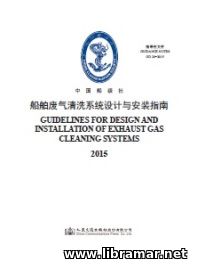 The CCS, i.e. China Register of Shipping issued document providing all required technical guidance for the design and installation of the EGCS, i.e. exhaust gas cleaning systems on board vessels. The guidebook starts with general information about the application of the content and class notation, abbreviations and definitions, functional requirements to these systems, risk analysis and documents/plans used, tests and surveys to be carried out on board, and certification matters.
The main part of the book covers the machinery equipment and monitoring, including exhaust backpressure and compatibility with the FO combustion units, wash water, residue and exhaust system EG piping interconnections, FW and seawater system etc., machinery equipment including fans, pumps, scrubbers, pressure vessels, wash water treatment units, isolation and bypass devices, monitoring, control and safety systems, and operation manual addressing both general requirements and emergency procedures.
The information that has been provided in the present document will be useful to the designers of such systems and for the personnel involved in their installation on board vessels.
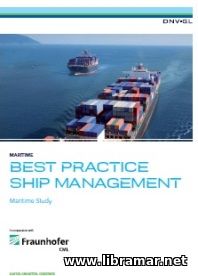 We understand that all ship managers are under pressure which is constantly increasing. The charter rates are coming down due to the overcapacities in the market of today. This makes the operators fight for the cargo and reduce the fuel cost which is one of the main blocks.
It appears that the ship operators have to sit somewhere in the middle and face the necessity to gain the management contracts while trying to maintain reasonable fees. However, the requirements on liability of the ships are also to be taken into consideration as necessary. We wish to invite our reader, industry professionals and anyone interested in the shipping industry to check these best practice against their operations and get some new and fresh ideas of the potential improvement areas.
The publication comprises different approaches, business models and procedures that are in use by ship managers in order to make their business safer, more efficient and more friendly to the environment. First chapter of the book provides a management view on the best practice; the following chapters are focusing on the best practice in crewing, technical and financial management, quality and safety management, and procurement. The methodology and the importance of ICT have also been highlighted in this booklet.
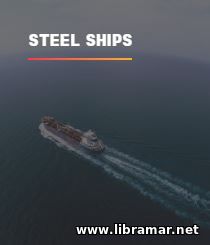 Check this latest release of the Bureau Veritas Rules for Classification of Steel Ships – note that this is the consolidated edition of the Rules featuring coverage of all relevant areas. The content of the document is arranged in six major sections. The first section, or Part A, provides introductory information on the classification of the ships and associated class surveys, while the second section is dealing with the ship’s hull and stability, including main principles applied to the design of the ships, design loads, scantlings and outfitting of the hull, strength, protection from corrosion etc.
The next section is covering such critical items as ship’s machinery, electrical arrangements, ship automation system and fire protection. The remaining three sections address the service notations assigned to the ships depending on their specific features, particularly ones for the OSV, i.e. offshore service vessels, and tug ships, as well as the additional classification notations that are assigned to the ship at the request of the owner and upon verification of compliance with the relevant sections of the Rules. A must-have publication on board all vessels classed by BV, one of the world leaders in the field of marine and offshore classification.
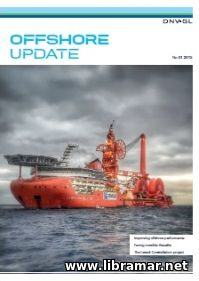 Well, last year has proven to be very difficult for the offshore industry all around the world. However, this year have been predicted to be ever more challenging for all of us. The cost saving affects the oil and gas exploration and production activities, and the demand for the offshore supply and support ships is reducing. In some areas the percentage of the laid-up fleet reaches unbelievable ten percent.
The low oil prices force charterers to focus on reducing their costs. In the present release readers will find some interesting articles explaining how the three major factors, i.e. safety, availability and reduced cost may be combined. It shall be noted that operational savings are not only coming from onboard activities but rather from proper planning of various related activities, effectiveness of logistics and some other factors. One will have to perform quite a deep analysis to find out how to reduce the consumption of fuel and get to know how new technologies may help in improving the operational performance of the vessels.
In addition to all above, this publication contains some recommendations on improving the performance of the OSVs, managing proper lay-up of the ships, addresses some economical and business aspects etc.
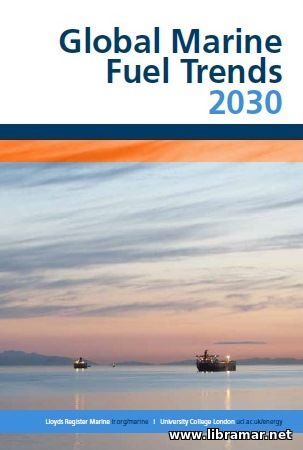 The main objective of this popular technical publication prepared by Lloyd's Register Group in collaboration with theand University College London was to unravel the whole landscape of marine fuels that are intended for commercial shipping over the next sixteen years or so. It includes following chapters - Foreword; Executive Summary; GloTraM, standing for the Global Transport Model; Scenarios; Technologies and fuels for deep sea shipping; Fuel prices vs. technology cost/performance; Marine fuel mix and demand 2030; Energy Efficiency Design Index and design vs. operational speeds; Emissions 2030; Postscript; The GMFT2030 Team; Acronyms; References. We all may observe the transformation that the maritime industry is undergoing.
Today, the vessel operators face the "big decisions" of tomorrow, together with the managing high operational costs and trying to achieve compliance with all strict requirements of the regulations concerning environment protection. Such decisions are relating to the future fuels, technologies and the possibility to "future-proof" their fleets as well as other assets. At Lloyd's Register society, we do our best trying to provide our Clients with the technical advice to support the commercial decision making - obviously, all technical decisions must be of some commercial sense...
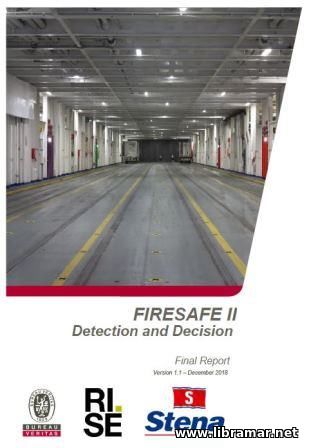 The timely detection of the fires on board ships and activation of the shipboard fire extinguishing systems are deservedly treated as the essential key to the proper and effective fire management as they will eventually help to avoid the loss of the human life as well as the damage from occurring to the vessel and cargo. Both these shall be paid due attention when developing the fire response measures.
The main intention of the authors of the present volume was to contribute to the fire safety of the Ro-Ro vessels through application of the cost-effective solutions and reducing the risks of fires taking place in the cargo spaces, and for discussing the technical proposal for the further development of the relevant regulatory framework including the class rules.
The volume consists of six parts and the first of them is devoted to the identification of the so-called RCOs, standing for the risk control options, and assessment of the most cost-efficient options. The authors follow the methodology of the regular formal safety assessment according to the appropriate IMO guidelines, with the five basic steps involved, namely identification of the hazards, risk analysis and control options, assessment, and the recommendations to be followed when making decisions.
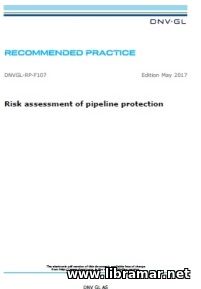 Another recommended practice released by the DNV GL classification society. The present document is dealing with the risk assessment of the pipeline protection. The content of the paper has been arranged in eight separate sections. The first and last section are providing general introduction to the subject and references, respectively.
The methodology related section addressed safety objectives and relevant acceptance criteria, identification of the hazards involves, risk assessment and measures to reduce risk. In the next section the activities are described in detail. The fourth section covers the pipelines and protection capacity including classification of the damages, steel pipelines, umbilicals and flexible pipelines, and different methods of protection.
The remaining sections of the booklet are dealing with the failure frequency including energy calculation, trawling and anchor handling, frequency ranking and crane activity etc., consequences including human safety and economic losses, and risk assessment including uncertainty assessment. The appendices provide example of the risk assessment procedure and procedure to be followed for testing of impact capacity.
« 1 2 ... 9 10 11 12 13 ... 29 30 » |







